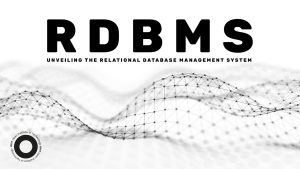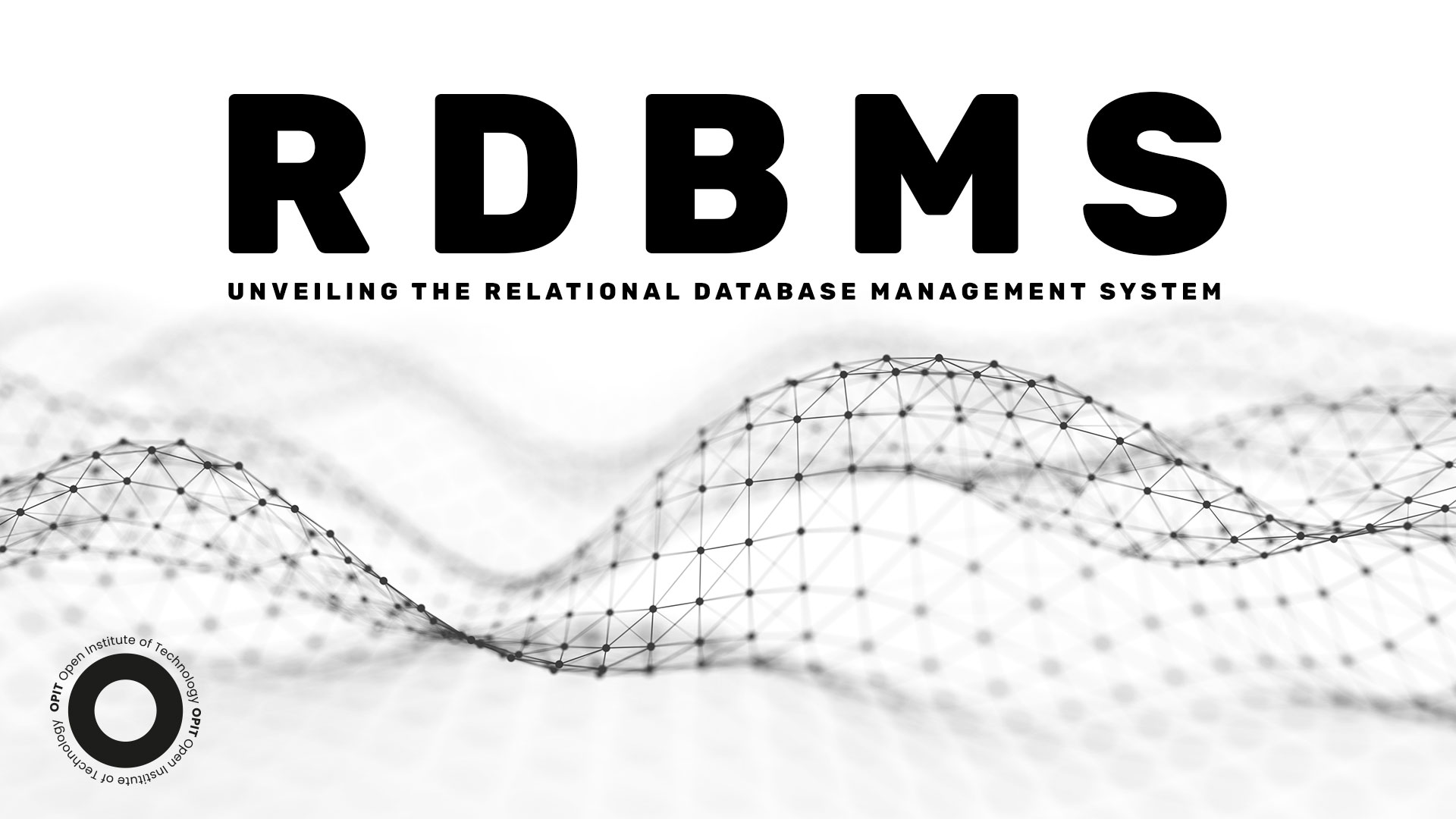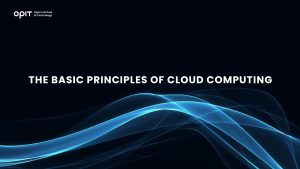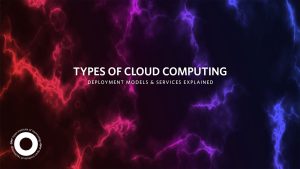

When you first get into modern computing, one of the terms that comes up most frequently is relational databases. These are clusters that are organized in such a way that they effortlessly find links between connected data points.
Relational databases are convenient, but what happens when you deal with vast amounts of information? You need something to act as your North Star, guiding you through the network and allowing you to stay on top of the data.
That something is an RDBMS. According to Google, RDBMS stands for a relational database management system – software that sets up and manages relational databases. In its full form, it’s been the light at the end of the tunnel for thousands of companies due to its accuracy, security, and ease of use.
The definition and importance of RDBMSs are the tip of the iceberg when it comes to these systems. This introduction to RDBMS will delve a bit deeper by taking a closer look at the concept of RDBMS, the history of this technology, use cases, and the most common examples.
History of RDBMS
The concept of RDBMS might be shrouded in mystery for some. Thus, several questions may come up when discussing the notion, including one as basic as “What is RDBMS?”
Knowing the RDBMS definition is a great starting point on your journey to understanding this concept. But let’s take a few steps back and delve into the history of this system.
Origins of the Relational Model
What if we told you that the RDBMS concepts are older than the internet? It may sound surprising, but it’s true.
The concept of RDBMS was developed by Edgar F. Codd 43 years ago. He aimed to propose a more efficient way to store information, a method that would consume drastically less memory than anything at the time. His model was groundbreaking, to say the least.
E.F. Codd’s Paper on Relational Model
Codd laid down his proposal in a 1970s paper called “A Relational Model of Data for Large Shared Data Banks.” He advocated a database solution comprised of intertwined tables. These tables enabled the user to keep their information compact, lowering the amount of disk space necessary for storage (which was scarce at the time).
The rest is history. The public welcomed Codd’s model with open arms since it optimized storage requirements and allowed people to answer practically any question using his principle.
Development of SQL
Codd’s research paved the way for relational database management systems, the most famous of which is SQL. This programming language was also developed in the ‘70s and was originally named SEQUEL (Structured English Query Language). It was quickly implemented across the computing industry and grew more powerful as the years went by.
Evolution of RDBMS Software
The evolution of RDBMS software has been fascinating.
Early RDBMS Software
The original RDBMS software was powerful, but it wasn’t a cure-all. It was a match made in heaven for users dealing with structured data, allowing them to organize it with minimal effort. However, pictures, music, and other forms of unstructured information were largely incompatible with this model.
Modern RDBMS Software
Today’s RDBMS solutions have come a long way from their humble beginnings. A modern relational DBMS can process different forms of information with ease. Programs like MySQL are versatile, adaptable, and easy to set up, helping database professionals spearhead the development of practically any application.
Key Concepts in RDBMS
Here’s another request you may have for an expert in RDBMS – explain the most significant relational database concepts. If that’s your question, your request has been granted. Coming up is an overview of RDBMS concepts that explain RDBMS in simple terms.
Tables and Relations
Tables and relations are the bread and butter of all relational database management systems. They sound straightforward, but they’re much different from, say, elements you come across in Microsoft Excel.
Definition of Tables
Tables are where data is stored in an RDBMS. They’re comprised of rows and columns for easier organization.
Definition of Relations
Relations are the links between tables. There can be several types of relations, such as one-to-one connections. This form means a data point from one table only matches one data point from another table.
Primary and Foreign Keys
No discussion about RDBMS solutions is complete without primary and foreign keys.
Definition of Primary Keys
A primary key is the unique element of each table that defines the table’s rows. The number of primary keys in a table is limited to one.
Definition of Foreign Keys
Foreign keys are used to form an inextricable bond between tables. They always refer to the primary key of another table.
Normalization
Much of database management is akin to separating wheat from the chaff. One of the processes that allow you to do so is normalization.
Purpose of Normalization
Normalization is about restoring (or creating) order in a database. It’s the procedure of eradicating unnecessary data for the purpose of cleaner tables and smoother management.
Normal Forms
Every action has its reaction. For example, the reaction of normalization is normal forms. These are forms of data that are free from redundant or duplicate information, making them easily accessible.
Popular RDBMS Software
This article has dissected basic relational database concepts, the RDBMS meaning, and RDBMS full form. To further shed light on the technology, take a look at the crème de la crème of RDBMS platforms.
Oracle Database
If you want to make headway in the database management industry, Oracle Database can be one of your best friends.
Overview of Oracle Database
Oracle Database is the most famous RDBMS around. The very database of this network is called Oracle, and the software comes in five different versions. Each rendition has a specific set of features and benefits, but some perks hold true for each one.
Key Features and Benefits
- Highly secure – Oracle employs top-grade security measures.
- Scalable – The system supports company growth with adaptable features.
- Available – You can tap into the architecture whenever necessary for seamless adjustments.
Microsoft SQL Server
Let’s see what another powerhouse – Microsoft SQL Server – brings to the table.
Overview of Microsoft SQL Server
Microsoft SQL Server is a reliable RDBMS with admirable capabilities. Like Oracle, it’s available in a range of editions to target different groups, including personal and enterprise users.
Key Features and Benefits
- Fast – Few systems rival the speed of Microsoft SQL Server.
- Versatile – The network supports on-premise and cloud applications.
- Affordable – You won’t burn a hole in your pocket if you buy the standard version.
MySQL
You can take your business to new heights with MySQL. The following section will explore what makes this RDBMS a go-to pick for Uber, Slack, and many other companies.
Overview of MySQL
MySQL is another robust RDBMS that enables fast data retrieval. It’s an open-source solution, making it less complex than some other platforms.
Key Features and Benefits
- Quick – Efficient memory use speeds up the MySQL environment.
- Secure – Bulletproof password systems safeguard against hacks.
- Scalable – You can use MySQL both for small and large data sets.
PostgreSQL
Last but not least, PostgreSQL is a worthy contender for the best RDBMS on the market.
Overview of PostgreSQL
If you need a long-running RDBMS, you can’t go wrong with PostgreSQL. It’s an open-source solution that’s received more than two decades’ worth of refinement.
Key Features and Benefits
- Nested transactions – These elements deliver higher concurrency control.
- Anti-hack environment – Advanced locking features keep cybercriminals at bay.
- Table inheritance – This feature makes the network more consistent.
RDBMS Use Cases
Now we get to what might be the crux of the RDBMS discussion: Where can you implement these convenient solutions?
Data Storage and Retrieval
- Storing large amounts of structured data – Use an RDBMS to keep practically unlimited structured data.
- Efficient data retrieval – Retrieve data in a split second with an RDBMS.
Data Analysis and Reporting
- Analyzing data for trends and patterns – Discover customer behavior trends with a robust RDBMS.
- Generating reports for decision-making – Facilitate smart decision-making with RDBMS-generated reports.
Application Development
- Backend for web and mobile applications – Develop a steady web and mobile backend architecture with your RDBMS.
- Integration with other software and services – Combine an RDBMS with other programs to elevate its functionality.
RDBMS vs. NoSQL Database
Many alternatives to RDBMS have sprung up, including NoSQL databases. But what makes these two systems different?
Overview of NoSQL Databases
A NoSQL database is the stark opposite of RDBMS solutions. It takes a non-relational approach, which is deemed more efficient by many.
Key Differences Between RDBMS and NoSQL Databases
- Data model – RDBMSs store structured data, whereas NoSQL databases store unstructured information.
- Scalability – NoSQL is more scalable because it doesn’t require a fixed schema (relation-based model).
- Consistency – RDBMSs achieve consistency through rules, while NoSQL models feature eventual consistency.
Choosing the Right Database for Your Needs
Keep these guidelines in mind when selecting your database platform:
- Use an RDBMS for centralized apps and NoSQL for decentralized solutions.
- Use an RDBMS for structured data and NoSQL for unstructured data.
- Use an RDBMS for moderate data activity and NoSQL for high data activity.
Exploring the Vast Utility of RDBMS
If you’re looking for a descriptive answer to the “what is relational database management system question,” here it is – it is the cornerstone of database management for countless enterprises. It’s ideal for structured data projects and gives the user the reins of data management. Plus, it’s as secure as it gets.
The future looks even more promising. Database professionals are expected to rely more on blockchain technology and cloud storage to elevate the efficacy of RDBMS.
Related posts

Bring talented tech experts together, set them a challenge, and give them a deadline. Then, let them loose and watch the magic happen. That, in a nutshell, is what hackathons are all about. They’re proven to be among the most productive tech events when it comes to solving problems and accelerating innovation.
What Is a Hackathon?
Put simply, a hackathon is a short-term event – often lasting just a couple of days, or sometimes even only a matter of hours – where tech experts come together to solve a specific problem or come up with ideas based on a central theme or topic. As an example, teams might be tasked with discovering a new way to use AI in marketing or to create an app aimed at improving student life.
The term combines the words “hack” and “marathon,” due to how participants (hackers or programmers) are encouraged to work around-the-clock to create a prototype, proof-of-concept, or new solution. It’s similar to how marathon runners are encouraged to keep running, putting their skills and endurance to the test in a race to the finish line.
The Benefits of Hackathons
Hackathons provide value both for the companies that organize them and the people who take part. Companies can use them to quickly discover new ideas or overcome challenges, for example, while participants can enjoy testing their skills, innovating, networking, and working either alone or as part of a larger team.
Benefits for Companies and Sponsors
Many of the world’s biggest brands have come to rely on hackathons as ways to drive innovation and uncover new products, services, and opportunities. Meta, for example, the brand behind Facebook, has organized dozens of hackathons, some of which have led to the development of well-known Facebook features, like the “Like” button. Here’s how hackathons help companies:
- Accelerate Innovation: In fast-moving fields like technology, companies can’t always afford to spend months or years working on new products or features. They need to be able to solve problems quickly, and hackathons create the necessary conditions to deliver rapid success.
- Employee Development: Leading companies like Meta have started to use annual hackathons as a way to not only test their workforce’s skills but to give employees opportunities to push themselves and broaden their skill sets.
- Internal Networking: Hackathons also double up as networking events. They give employees from different teams, departments, or branches the chance to work with and learn from one another. This, in turn, can promote or reinforce team-oriented work cultures.
- Talent Spotting: Talents sometimes go unnoticed, but hackathons give your workforce’s hidden gems a chance to shine. They’re terrific opportunities to see who your best problem solvers and most creative thinkers at.
- Improving Reputation: Organizing regular hackathons helps set companies apart from their competitors, demonstrating their commitment to innovation and their willingness to embrace new ideas. If you want your brand to seem more forward-thinking and innovative, embracing hackathons is a great way to go about it.
Benefits for Participants
The hackers, developers, students, engineers, and other people who take part in hackathons arguably enjoy even bigger and better benefits than the businesses behind them. These events are often invaluable when it comes to upskilling, networking, and growing, both personally and professionally. Here are some of the main benefits for participants, explained:
- Learning and Improvement: Hackathons are golden opportunities for participants to gain knowledge and skills. They essentially force people to work together, sharing ideas, contributing to the collective, and pushing their own boundaries in pursuit of a common goal.
- Networking: While some hackathons are purely internal, others bring together different teams or groups of people from different schools, businesses, and places around the world. This can be wonderful for forming connections with like-minded individuals.
- Sense of Pride: Everyone feels a sense of pride after accomplishing a project or achieving a goal, but this often comes at the end of weeks or months of effort. With hackathons, participants can enjoy that same satisfying feeling after just a few hours or a couple of days of hard work.
- Testing Oneself: A hackathon is an amazing chance to put one’s skills to the test and see what one is truly capable of when given a set goal to aim for and a deadline to meet. Many participants are surprised to see how well they respond to these conditions.
- Boosting Skills: Hackathons provide the necessary conditions to hone and improve a range of core soft skills, such as teamwork, communication, problem-solving, organization, and punctuality. By the end, participants often emerge with more confidence in their abilities.
Hackathons at OPIT
The Open Institute of Technology (OPIT) understands the unique value of hackathons and has played its part in sponsoring these kinds of events in the past. OPIT was one of the sponsors behind ESCPHackathon 6, for example, which involved 120 students given AI-related tasks, with mentorship and guidance from senior professionals and developers from established brands along the way.
Marco Fediuc, one of the participants, summed up the mood in his comments:
“The hackathon was a truly rewarding experience. I had the pleasure of meeting OPIT classmates and staff and getting to know them better, the chance to collaborate with brilliant minds, and the opportunity to take part in an exciting and fun event.
“Participating turned out to be very useful because I had the chance to work in a fast-paced, competitive environment, and it taught me what it means to stay calm and perform under pressure… To prospective Computer Science students, should a similar opportunity arise, I can clearly say: Don’t underestimate yourselves!”
The new year will also see the arrival of OPIT Hackathon 2026, giving more students the chance to test their skills, broaden their networks, and enjoy the one-of-a-kind experiences that these events never fail to deliver. This event is scheduled to be held February 13-15, 2026, and is open to all OPIT Bachelor’s and Master’s students, along with recent graduates. Interested parties have until February 1 to register.

The Open Institute of Technology (OPIT) recently held its first-ever career fair to showcase its wide array of career education options and services. Representatives from numerous high-profile international companies were in attendance, and students enjoyed unprecedented opportunities to connect with business leaders, expand their professional networks, and pave the way for success in their future careers.
Here’s a look back at the event and how it ties into OPIT’s diverse scope of career services.
Introducing OPIT
For those who aren’t yet familiar, OPIT is an EU-accredited Higher Education Institution, offering online degrees in technological fields such as computer science, data science, artificial intelligence, cybersecurity, and digital business. Aimed at making high-level tech education accessible to all, OPIT has assembled a stellar team of tutors and experts to train the tech leaders of tomorrow.
The First OPIT Career Fair
OPIT’s first career fair was held on November 19 and 20. And as with OPIT’s lectures, it was an exclusively online event, which ensured that every attendee had equal access to key lectures and information. Interested potential students from all over the world were able to enjoy the same great experience, demonstrating a core principle that OPIT has championed from the very start – the principles of accessibility and the power of virtual learning.
More than a dozen leading international companies took part in the event, with the full guest list including representatives from:
- Deloitte
- Dylog Hitech
- EDIST Engineering Srl
- Tinexta Cyber
- Datapizza
- RWS Group
- WE GRELE FRANCE
- Avatar Investments
- Planet Farms
- Coolshop
- Hoist Finance Italia
- Gruppo Buffetti S.p.A
- Nesperia Group
- Fusion AI Labs
- Intesi Group
- Reply
- Mindsight Ventures
This was a fascinating mix of established enterprises and emerging players. Deloitte, for example, is one of the largest professional services networks in the world in terms of both revenue and number of employees. Mindsight Ventures, meanwhile, is a newer but rapidly emerging name in the fields of AI and business intelligence.
The Response
The first OPIT career fair was a success, with many students in attendance expressing their joy at being able to connect with such a strong lineup of prospective employers.
OPIT Founder and Director Riccardo Ocleppo had this to say:
“I often say internally that our connection with companies – through masterclasses, thesis and capstone projects, and career opportunities – is the ‘cherry on the cake’ of the OPIT experience!
“It’s also a core part of our mission: making higher education more practical, more connected, and more aligned with what happens in the real world.
“Our first Career Fair says a lot about our commitment to building an end-to-end learning and professional growth experience for our community of students.
“Thank you to the Student and Career Services team, and to Stefania Tabi for making this possible.”
Representatives from some of the companies that attended also shared positive impressions of the event. A representative from Nesperia Group, for example, said:
“Nesperia Group would like to thank OPIT for the warm welcome we received during the OPIT Career Day. We were pleased to be part of the event because we met many talented young professionals. Their curiosity and their professional attitude really impressed us, and it’s clear that OPIT is doing an excellent job supporting their growth. We really believe that events like these are important because they can create a strong connection between companies and future professionals.”
The Future
Given the enormous success of the first OPIT career fair, it’s highly likely that students will be able to enjoy more events like this in the years to come. OPIT is clearly committed to making the most of its strong business connections and remarkable network to provide opportunities for growth, development, and employment, bringing students and businesses together.
Future events will continue to allow students to connect with some of the biggest businesses in the world, along with emerging names in the most exciting and innovative tech fields. This should allow OPIT graduates to enter the working world with strong networks and firm connections already established. That, in turn, should make it easier for them to access and enjoy a wealth of beneficial professional opportunities.
Given that OPIT also has partnerships in place with numerous other leading organizations, like Hype, AWS, and Accenture, the number and variety of the companies potentially making appearances at career fairs in the future should no doubt increase dramatically.
Other Career Services at OPIT
The career fair is just one of many ways in which OPIT leverages its company connections and offers professional opportunities and career support to its students. Other key career services include:
- Career Coaching: Students are able to schedule one-on-one sessions with their own mentors and career advisors. They can receive feedback on their resumes, practice and improve their interview skills, or work on clear action plans that align with their exact professional goals.
- Resource Hub: The OPIT Resource Hub is jam-packed with helpful guides and other resources to help students plan out and take smart steps in their professional endeavors. With detailed insights and practical tips, it can help tech graduates get off to the best possible start.
- Career Events: The career fair is only one of several planned career-related events organized by OPIT. Other events are planned to give students the chance to learn from and engage with industry experts and leading tech firms, with workshops, career skills days, and more.
- Internships: OPIT continues to support students after graduation, offering internship opportunities with leading tech firms around the world. These internships are invaluable for gaining experience and forging connections, setting graduates up for future success.
- Peer Mentoring: OPIT also offers a peer mentoring program in which existing students can team up with OPIT alumni to enjoy the benefits of their experience and unique insights.
These services – combined with the recent career day – clearly demonstrate OPIT’s commitment to not merely educating the tech leaders of the future, but also to supporting their personal and professional development beyond the field of education, making it easier for them to enter the working world with strong connections and unrivaled opportunities.
Have questions?
Visit our FAQ page or get in touch with us!
Write us at +39 335 576 0263
Get in touch at hello@opit.com
Talk to one of our Study Advisors
We are international
We can speak in:


